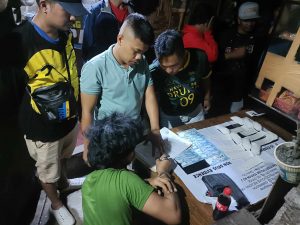THE city government has set aside about P30 million as part of the intervention program to help farmers cope with the impact of calamities this year.
The fund is being sourced from the Annual Development Fund and is placed under the Local Disaster Risk Reduction and Management.
Of the fund, P6 million has been used to acquire the veterinary mobile clinic and laboratory and animal rescue vehicles, another P2.282 was set aside for supplies and materials for animal rescue operations during disaster response under the “Sagip Hayop;” and P3 million went to the operation and maintenance of quarantine checkpoints in Lasang, Lacson, Toril, Sasa wharf, and Davao-Samal port.
The city government also set aside about P5.5 million for the “Tabang sa Industriya sa Panghayupan,” to assist the livestock, poultry, and dairy farmers buy buying their products and distributing these to the vulnerable sector.
This assistance was used during the enhanced community quarantine (ECQ) in April and May as identified households were also provided with food from this initiative during the lockdowns.
For the Crisis Intervention Program, the City Mayor’s Office set aside about P8.5 million as budget as compensation to affected farmers whose hogs were culled due to the African Swine Fever (ASF).
ssistant City Veterinarian Dr. Esther Cherrie G. Rayos said the ASF affected 950 farmers in barangays Lamanan and Dominga in Calinan District and Inawayan, Toril with about 4,450 pigs were culled.
“ASF in these barangays has already been controlled except for few isolated cases in Paquibato, maybe due to the inter-connectivity of our roads, that have yet to be verified,” Rayos said.
She said that ASF follows the movement of people. “It’s the people who are carriers of the infection through their vehicles and shoes,” she said.
The city government has continued to control the ASF outbreak by investing P5 million to buy supplies and materials for its prevention and control and P999,633.75 for the massive ASF testing and diagnosis that targeted the surveillance of ASF in vulnerable areas.
Rayos, however, admitted tracing ASF sources and carriers are equally challenging as contact tracing for suspected coronavirus disease (Covid-19) patients.
“Mahirap talaga kumbaga mag forward and backward tracing. Ang hirap hindi naming alam kung saan galling. Kinu-control nalang naming ang sakit (It is difficult to do forward and backward tracing. We don’t know where the disease came from. We just control it),” she added.
Asked if the city is ready for another outbreak, Rayos said, “We are intensifying our monitoring. Our personnel in the districts submit a weekly report. That is what we can do considering that there is no medicine or vaccine for ASF or even for avian influenza. If there are suspected symptoms, our personnel would immediately go to the area to collect samples.”
According to Rayos, the ASF was the worst outbreak that hit Davao City.
“We had outbreaks in the past but not as massive as the ASF. We had cholera outbreak but not as adverse as what we experienced with the ASF,” she said.
For the public’s safety, she reminded Dabawenyos to only buy meat products from reputable suppliers and that consumers who go to the markets and supermarkets must check the meat inspection certificates.




